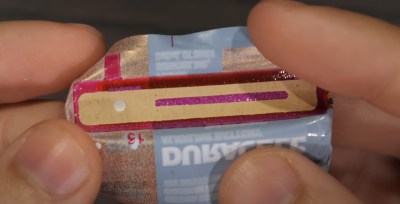When it comes to Nixie tubes, the most common usage these days seems to be in clocks. That has people hunting for the numerical version of the tubes, which are usually paired with a couple of LEDs to make the colon in the middle of the clock. However, other Nixie tubes exist, like the IN-7, which has a whole bunch of neat symbols on it instead. [Joshua] decided to take these plentiful yet less-popular tubes and whip them up into a little art piece.
The IN-7 is a tube normally paired with the numerical IN-4 tube in instrumentation, where it displays unit symbols relevant to the number being displayed. It can display omega, +, M, pi, m, A, -, V, K, and ~.
[Joshua]’s build is simple enough. It spells the word “MAKE” in Nixie tubes as a neat sign for a makerspace. It uses “M” for Mega, “A” for Amps, “K” for Kilo for the first three letters. The fourth letter, “e”, is achieved by turning the tube 90 degrees, so the “m” for milli approximates that character. Two rows spelling “MAKE” (or “MAKe”) are assembled, powered via a small circuit which [Joshua] assembled on a custom-etched board using the toner transfer process. The electronics are all wrapped up in a neat laser-cut acrylic enclosure which was designed in Inkscape.
It’s a neat little project which makes good use of a Nixie tube that is, by and large, unloved. It also recalls us of a misspent youth, writing silly words on scientific calculators using only the available Greek characters. Meanwhile, if you’re working on your own Nixie builds, we’ve featured some neat drivers that you might just find valuable.
Continue reading “Symbolic Nixie Tubes Become Useful For Artistic Purposes”


















